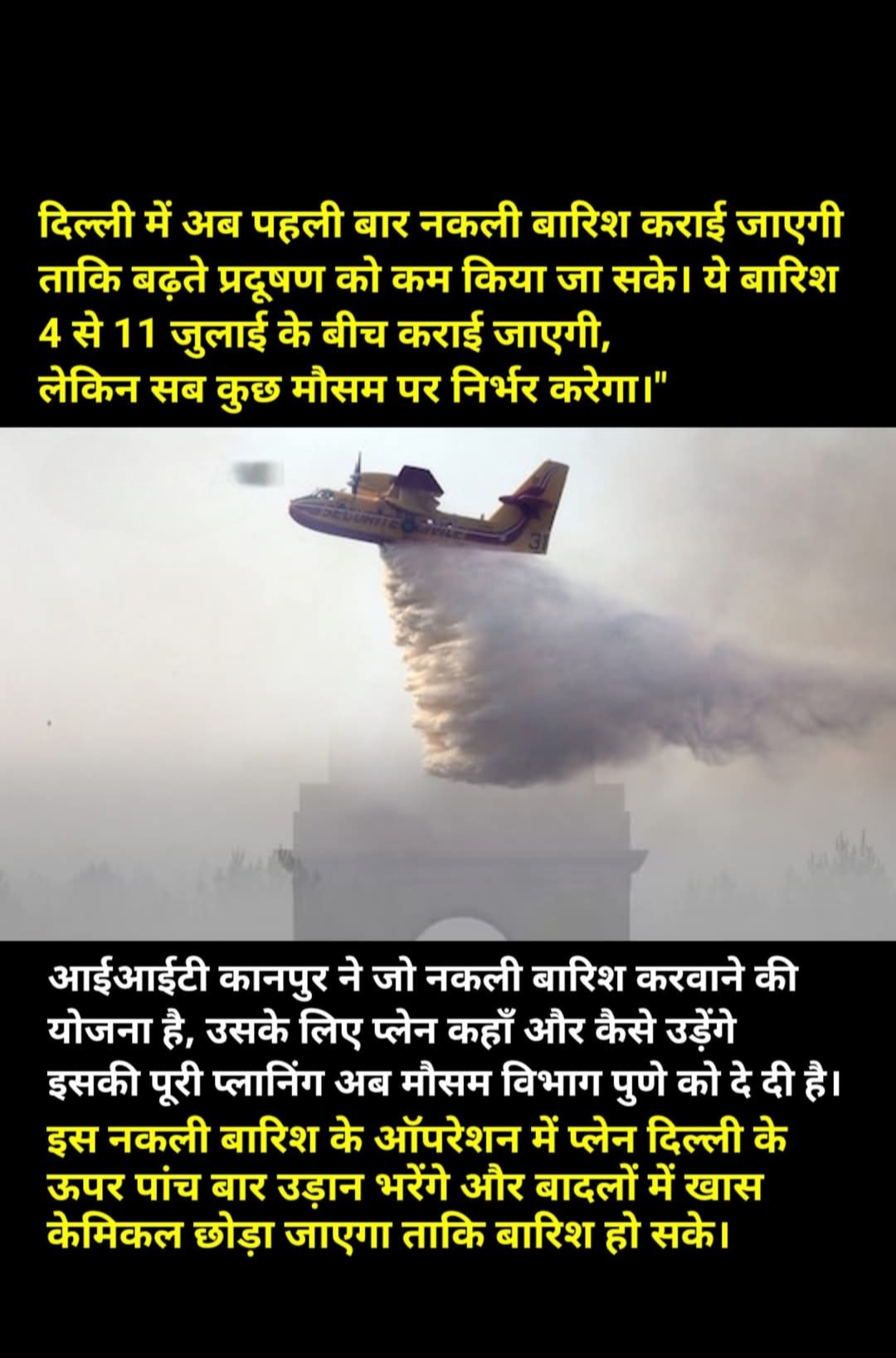
😮 Delhi Prepares for Its First Artificial Rain to Combat Air Pollution
😮 वायु प्रदूषण से निपटने के लिए दिल्ली में पहली बार कृत्रिम बारिश की तैयारी
😮 Delhi Prepares for Its First Artificial Rain to Combat Air Pollution
In a groundbreaking move to address the worsening air pollution crisis, Delhi is set to witness its first-ever artificial rainfall operation, scheduled between July 4 and July 11, depending on favorable weather conditions. This marks a significant step toward implementing scientific solutions to manage environmental challenges in the national capital.
☁️ What Is Artificial Rain (Cloud Seeding)?
Artificial rain, or cloud seeding, is a process that involves spraying certain chemicals — like silver iodide, potassium iodide, or dry ice — into the atmosphere to stimulate cloud formation and induce rainfall. Aircraft are typically used to release these chemicals into pre-existing clouds.
The aim is to trigger rainfall artificially, especially when natural rainfall is insufficient or delayed.
🧪 Who Is Behind the Operation?
The prestigious Indian Institute of Technology (IIT) Kanpur is leading this mission. They have:
Designed the technical flight plan
Determined the suitable aircraft routes
Studied Delhi’s current atmospheric conditions
The flight plan has been officially submitted to the India Meteorological Department (IMD) in Pune, which will oversee and approve the weather-based execution.
✈️ How Will It Work?
A total of five aircraft sorties (flights) will be carried out over Delhi’s skies.
These flights will target cloud-heavy areas and release cloud seeding agents to prompt artificial rainfall.
The goal is to settle airborne pollutants and provide temporary relief from hazardous air quality levels.
🌫️ Why Does Delhi Need This?
Delhi has long been plagued by severe air pollution, especially during the summer and post-monsoon months. Despite efforts like odd-even vehicle rules, construction bans, and smog towers, pollution remains a recurring and dangerous issue.
Artificial rain is seen as an emergency intervention when pollution levels peak and natural weather patterns offer no relief.
📢 What Experts Say
Environmental scientists and meteorologists see this move as a progressive step, though they emphasize that it’s a short-term fix, not a permanent solution. The success of cloud seeding depends heavily on:
Cloud presence
Atmospheric moisture levels
Wind and temperature patterns
🌧️ Public Expectations and Concerns
Many residents are hopeful that the artificial rain will provide at least temporary respite from the suffocating air. However, some have raised questions:
Will the chemicals used be safe for the environment?
Is it a cost-effective method?
Could it disrupt natural monsoon patterns?
IIT Kanpur and IMD have assured the public that safety protocols and environmental checks are being strictly followed.
✅ Conclusion
Delhi’s first artificial rain operation is more than just a weather experiment — it’s a symbol of urgency and innovation in the fight against pollution. While it may not solve the problem permanently, it reflects a growing trend of using science-backed solutions to address urban environmental crises.
If successful, this initiative could be expanded to other cities facing similar challenges.
#ArtificialRain #CloudSeeding #DelhiRain #AirPollution #CleanAir
#IITKanpur #IMDIndia #EnvironmentMatters #FightPollution #DelhiNews
